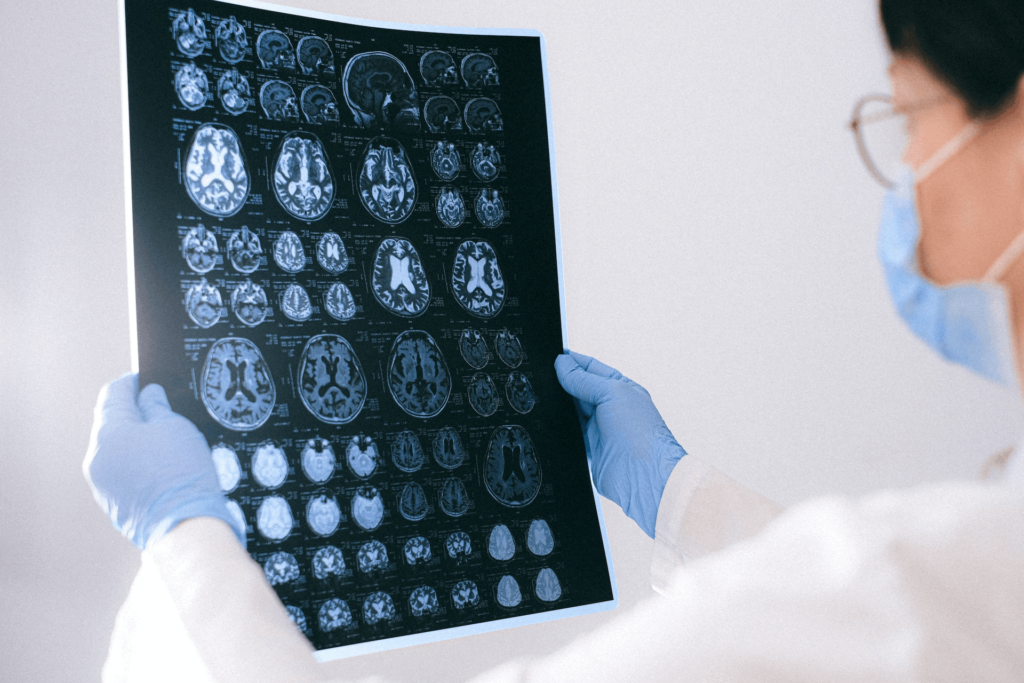Traumatic brain injury, or TBI, gave rise to at least 64,000 deaths in the US in 2020, with car accidents being one of its leading causes. Sixteen percent of all the traumatic brain injury incidents recorded annually were brain stem injuries.
Most, if not all, of these patients, had little to no chance of recovery. Some even stay in a vegetative state for more than 36 months following the accident. Many consider full recovery or coming out of a coma a miracle, as irreversible long-term effects are the norm.
One particular example of this is Jonathan’s case. He suffered a severe traumatic brain injury in a motor vehicle accident and was placed in a medically-induced coma.
Despite surgery, his condition didn’t improve. It left his family with the difficult decision of continuing his treatment as the hospital bills mounted. While his spinal cord was undamaged, Jonathan remained unconscious and could not move.
Although Jonathan was at fault for his accident, it’s not uncommon for victims’ families to sue for compensation when someone is responsible for their loved one’s misfortune. Hospital confinement and rehabilitation from a traumatic brain injury, i.e., brain stem injury, is financially devastating. Families need to explore all options for financial recovery.
The most appropriate course of action to secure compensation is to engage the services of brain injury lawyers. Legal action against responsible parties can diminish the financial instability these accidents can cause.
Key Takeaways
|
Brain Stem Injuries: Explained


Not all traumatic brain injuries are brain stem injuries, but all brain stem injuries are traumatic brain injuries. Treatment and recovery vary, depending on the injury’s severity and location.
The person’s lifestyle before the injury plays a big part in both the manner of treatment and recovery. The healthier the body, the easier it is for the body to get better.
While Jonathan miraculously recovered after spending weeks in the intensive care unit, his road to rehabilitation was long and arduous. It took perseverance, a vigil, and a medical miracle, to pull him out of the coma.
Recovery time can take weeks or months, depending on many factors. Injuries to the brain stem require different approaches for rehabilitation.
The brain stem is a slender structure that connects the brain to the spinal cord. It is part of the central nervous system (CNS) and transmits essential instructions to different parts of the body. It allows the body parts to carry out crucial functions we usually take for granted.
The brain stem consists of several important parts that most overlook. You should seek treatment for these critical areas in the event of any injury – even superficial contusions.
- Midbrain
The midbrain is situated at the top of the brain stem and controls muscle movement. It relays auditory and visual information and regulates sleep, alertness, and body temperature. Minor damage to this area of the brain can cause problems with simple tasks such as typing and focusing.
- Pons
Located below the midbrain is the pons. It is part of the brain that connects the cerebellum and spinal cord and regulates balance and other functions. Issues with coordination and mobility happen when the midbrain is affected.
- Medulla oblongata
At the base of the brain stem lies the medulla oblongata, which supervises vital life functions like breathing, heart rate, and swallowing. The stuff we don’t usually think about is regulated by this part of the brain.
The brain stem is vulnerable to trauma, so brain stem injuries are relatively common. Microscopic damage to any of these parts, especially the medulla, usually leads to long-term bodily dysfunctions, such as arrhythmia and irregular breathing patterns.
Typical causes
The brain stem allows the transmission of instructions from the brain to other body parts. Any injury to the brain stem can compromise motor neuron functionality, including reflexes.
These injuries occur more often than you might expect. Causes of brain stem injuries include the following:
- Slips and falls
- Workplace accidents
- Premises liability accidents
- Car accidents
- Pedestrian accidents
- Intentional violence
- Recreational and sports accidents
- Construction and site-related accidents
- Bicycle accidents
- Motorcycle crashes
- Truck accidents
The skull does not encompass the brain stem, so it is one of the most affected regions of the CNS in an accident. Using caution in everyday activities, i.e., wearing a seatbelt during car rides, can help reduce your risk of sustaining brain stem injuries. According to the Centers for Disease Control, a simple act such as wearing a seatbelt can reduce the risk of serious injury by 50 percent.
Wearing appropriate work safety gear when participating in high-risk activities is prudent. The Occupational Standards and Health Administration almost always require helmets in workplaces that could expose their employees to bodily harm.
By being mindful of the potential risks of any activity you are participating in, you would be less likely to fall victim to a brain stem injury. Avoiding the risk now rather than suffering the consequences later is better.
Brain stem injury symptoms and effects
The patient’s quality of life is often severely reduced immediately after severe head trauma. Its symptoms and effects often manifest in the most inconvenient way possible. Some of the effects of brain stem injuries are the following:
- Disrupted sleep patterns
- Sensitivity to light
- Irregular blood pressure and blood flow
- Dizziness, nausea, or vomiting
- Inability to cough or gag
- Difficulty eating, drinking or swallowing
- Slurred speech
- Inability to control movement
- Decreased motor function
- Sudden loss of consciousness
- Incontinence
- Paralysis
- Locked-in syndrome
The list is not exhaustive, as traumatic brain injury symptoms are numerous. Some signs of brain injury can appear to make the simplest things challenging to perform. Bodily functions we take for granted, like draining fluids from the nose, can become difficult for someone with a brain stem injury.
If you ever feel any of the symptoms after suffering from a concussion, immediately have yourself assessed by the nearest hospital.
Recovery and rehabilitation


The treatment for brain stem injuries typically goes through two stages. The first is life-saving emergency surgery for severe injuries. Doctors must address the most urgent issues, such as brain swelling and the formation of blood clots, immediately after an accident. If done improperly, the damage can lead to brain death.
In some cases, the patient does not need any treatment at all. The brain’s neuroplasticity allows it to adapt and require neural pathways in response to trauma.
In either case, once the patient is stable, the next stage is rehabilitation to address secondary issues. However, recovery can only begin if the patient can handle simple tasks.
The path to recovery and rehabilitation is not a straight one. No treatment and recovery processes are the same, and patients’ injuries can vary significantly. Even under ideal conditions, recovery from serious brain stem injury is only possible through faithful adherence to the program.
Engaging in functional activities at home and in your community can also help a victim recover better and faster. Families should provide emotional and financial support throughout recovery. Addressing the psychological, cognitive, social, and physical issues resulting from the TBI is critical to returning to normalcy.
The entire process is costly and time-consuming, and many patients cannot work while coping with a brain stem injury. Treatments for this condition tend to be expensive and, sometimes, lifelong. Your program will be tailor-fit to the type of brain injury and how fast you progress through your therapy goals.
Manage your expectations, as there is no guarantee of full or even partial recovery, even with the best treatment. As is the case for many of the victim’s families, some end up breaking the bank and loaning colossal sums to have a shot at resetting the victim’s quality of life.
Did you know?
Around sixty-nine million people around the world suffer from traumatic brain injuries every year. The Center for Disease Control has stated that the most common causes of brain injuries are falls, motor vehicle accidents, assaults, and firearm-related suicides.
Get Referred to a Brain Stem Injury Lawyer Today
The brain is highly adaptable, so recovery from brain stem injuries is not impossible. However, it can be an emotional and financial drain on the victims and their families.
In the case of Jonathan, the progress was slow. However, he went from moving his head from right to left to fully recovering and becoming a walking inspiration for his community. His journey was nothing short of a miracle.
Brains stem injuries are severe and can leave a person disabled and render their families financially burdened. Seeking legal action against the at-fault party can help accident victims get compensation for lost time, opportunities, and earning capacity.
Hire a skilled attorney specializing in brain stem injury accidents to manage your case and advocate for fair compensation under the law. The Personal Injury Center has an extensive library of resources to guide you through your case. When you’re ready, you can use our network of experienced and qualified brain injury lawyers who can help you.
Recover what was lost due to your brain stem injury with the help of The Personal Injury Center. Consult an experienced brain stem injury lawyer today.
FAQs on Brain Stem Injuries
What is a locked-in syndrome?
The term “locked-in syndrome” refers to a state in which a person is aware and can move their eyes but cannot otherwise move or speak. The recovery program will focus on rebuilding the body's communication system and physical rehabilitation and maintenance.
What is the cost associated with treating a brain stem injury?
Hospital costs for treating brain stem injuries range from $2,000 to $400,000, depending on the severity of the case. This does not include other fees, such as rehabilitation and long-term care.
How long does it take for a brain stem injury victim to recover?
Recovery from a brain stem injury varies but generally takes a significant time. Some recover within a few weeks, while others remain in a coma for months or years.



